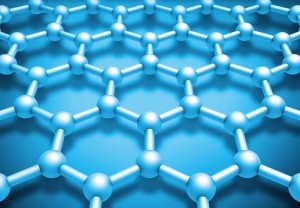Winning Essays
 Below are excerpts from The 2016 DuPont Challenge first place essays.
Below are excerpts from The 2016 DuPont Challenge first place essays.
Sonja Michaluk, Junior Division First Place Winner
 Because Salamanders Cannot Speak for Themselves (excerpt)
Because Salamanders Cannot Speak for Themselves (excerpt)
As I trembled with fear waiting for my name to be called and my turn at the podium, I pictured a salamander with gentle gazing eyes. Standing in front of approximately 100 people at a New Jersey Department of Environmental Protection Public Hearing, I tried to simply go through my presentation. Afterward one of the other presenters told me “This room was so full of opinions. You are the only one who brought data.” Recently, one of my favorite wild places had been chosen as the site for a natural gas pipeline. I have been gathering data on stream health and active in advocating for using the least invasive construction methods to the local ecosystem. After the meeting the NJDEP requested my presentation. The pipeline company offered their assistance with my project; I politely declined.
As a community, how do we reconcile our collective desire for the comforts of civilization with the understanding of the consequences? What if we could create simulations in the lab and build algorithms with field data that help us understand the real impact of development, from the stream bed, to small invertebrates, to fish and ecosystems? What if we could see potential impacts of our decisions and have a more informed discussion?
One of my freshwater ecology projects led me to start thinking about environmental modeling. This project was an 8 month study on macroinvertebrate populations and nutrient pollution in local streams. I presented at the Academy of Natural Sciences in Philadelphia, at the Society for Freshwater Science Chapter Meeting. There I participated in a workshop, Causal Analysis/Diagnosis Decision Information System, or CADDIS. This methodology is named after the caddisfly larva, an organism that indicates good water quality. CADDIS provides a guide to determining the causes of environmental issues seen in waterways, such as fish kills, and algal blooms. While CADDIS helps trace existing issues to causes, at Purdue University a more forward looking model is being used. The Long-Term Hydrologic Impact Assessment (L-THIA) predicts how pollution from sediment, nutrients, heavy metals, and oils change under various development scenarios, such as changing forested land to commercial use.
…Given this foundation of research on the ecological impacts of constructing pipeline stream crossings, it would seem a logical next step to model the impact of multiple stream crossings within a watershed, and even further downstream on estuaries and bays. Where would data for such a model come from? For the past five years, I have donned waders and devoted many weekends and evenings to try to better understand our impact to freshwater streams. I am part of volunteer teams that monitor local waterway health through chemical and biological sampling. I am also beginning a new phase in my research project: a laboratory simulation of infrastructure development on stream health. This is an investigation into the effects of leaf litter breakdown on water quality, comparing native and invasive species. Additionally, the effects of sedimentation caused by soil disturbance will be simulated by introducing clay soil into a laboratory macroinvertebrate population. Perhaps this effort will provide data that will be useful in the public debate over the other pipeline projects planned in our area.
See the full list of Junior Division winners and honorable mentions.
Fudong Fan, Senior Division First Place Winner
 Out with the Old, Silicon, in with the New, Graphene (excerpt)
Out with the Old, Silicon, in with the New, Graphene (excerpt)
Imagine me each day for three blissful summers hunched over a laptop computer churning out lines of ABINIT, Python, or Fortran in a frenzy. My code is intended to replicate complex atomic systems and calculate their physical properties. In particular, I am modeling graphene, the two-dimensional sheet of carbon atoms arranged in a distinctive honeycomb lattice, first discovered in 2004. It is the magic material famed for its strength, flexibility, and most of all, its electrical conductivity (Jung et al., 2015). Directing my attention to another monitor, my research paper in progress is open in LaTeX, the typesetting program of choice for scientists. Rapidly Alt-Tabbing and mashing directions in the command-line, I fumble open a text file containing raw data in units of ångströms and hartrees. Unsatisfactory, I think. Need to run more calculations. How will I make this deadline? I sigh and run my next calculation in parallel, using five of my computer’s eight available cores. The laptop breathes hot air in protest, and my keyboard becomes warm to the touch. It doesn’t help that it’s also summertime.
Over the past three summers I have worked relentlessly to make graphene not just a reality, but also a viable and practical upgrade from the silicon architecture we currently employ in integrated circuits. The processing power of integrated circuits has steadily doubled every two years since their invention in 1958, a trend known as Moore’s Law, but this rate is decreasing as we approach the intrinsic limits of silicon. Graphene is the rising star, the promising contender that will overhaul the aging primitive silicon technology upon which we have become excessively reliant. Indeed, Professor Hongzhi Wang of Donghua University in China remarks that research in graphene is extremely lucrative and promising (Hongzhi Wang, personal communication, January 9, 2016). This is because application of graphene in integrated circuits is just one among a plethora of possible implementations: Jung et al., for example, in 2015 developed a graphene device for use in scanning tunneling microscopy studies at the atomic level.
…Despite the fact that graphene still has intrinsic limitations yet to be resolved, scientists around the world refuse to be discouraged from uncovering more and more of graphene’s applications. Take Xin et al., of Rensselaer Polytechnic Institute’s electrical engineering department. In 2015, Xin et al. synthesized a graphene-derived macroscopic structure — graphene fiber, to be exact — that boasts not only impressively high thermal conductivity and electrical conductivity, but also newfound mechanical strength up to 1,080 megapascals. Such strength was previously lost in translation when building a macroscopic structure out of graphene. An even more novel and breathtaking recent application is a paper derived from graphene, developed by Mu et al. of Donghua University in 2015. Inspired by folding origami paper, Mu et al. fabricated a paper composed entirely of graphene oxide, which can adopt predesigned shapes, walk, and even turn corners. With a memory of its own, it is expected to replicate muscle memory and create artificial muscles, and serve in implementations such as sensing and robotics. Moreover, my very own summer research aimed to tailor graphene for cutting-edge applications in computing. In particular, using ab initio calculations I coupled graphene with an organic molecule for the purpose of enabling its application in molecular electronics, a cutting-edge field making electronic components out of mere single molecules. Because processing power is inversely proportional to transistor size, in combining graphene with molecular electronics we may sustain the trend described by Moore’s Law. One can only imagine the breadth and depth of graphene’s applications once the entirety of graphene’s limitations has been remedied.
See the full list of Senior Division winners and honorable mentions.
